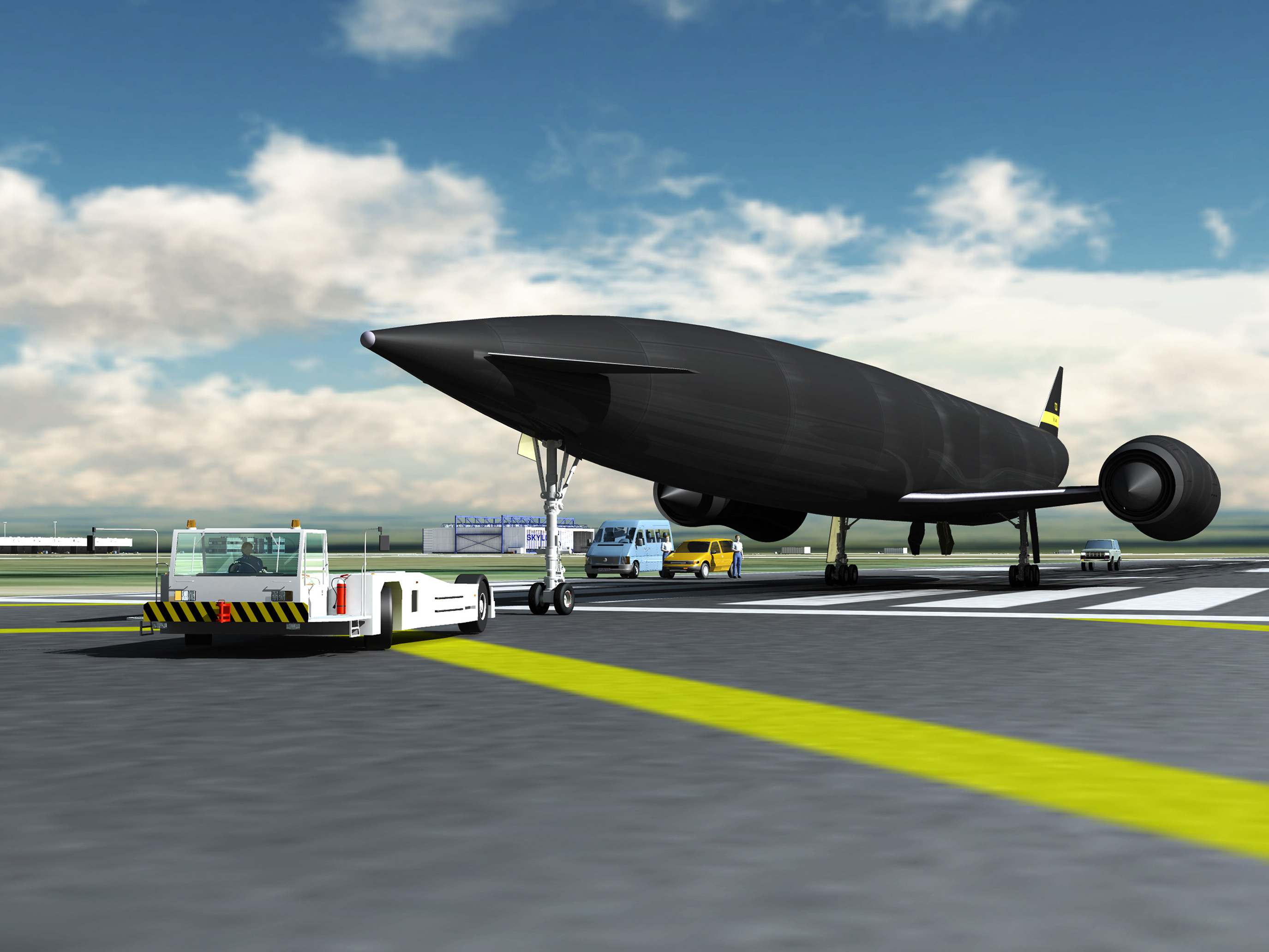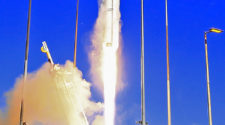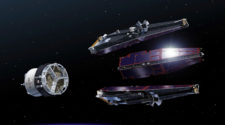
A fleet of Skylon vehicles can operate from a spaceport. A Vehicle Loading Hall receives and processes payloads which are installed in the Skylon payload bay. Skylon is then towed to the spaceport’s Refuelling Apron. Liquid Oxygen and Liquid Hydrogen propellants are loaded through connections in the wheel wells. Skylon is towed to the runway for pre-flight checks.
At the start of the take-off roll the vehicle weighs 275 tonnes, whilst maximum landing weight is 55 tonnes. At take-off the vehicle carries approximately 66 tonnes of liquid hydrogen and approximately 150 tonnes of liquid oxygen for the ascent.
The SABRE engines are ignited in air-breathing mode, burning hydrogen fuel with air. Air must be heavily cooled by heat exchangers before being used by the hybrid SABRE engine.
The SABRE engines have a dual mode capability using the same nozzles, pumps and hydrogen fuel in-air breathing mode as in rocket mode. In rocket mode the engine operates as a closed cycle Lox/Lh2 high specific impulse rocket engine. In air-breathing mode (from take-off to Mach 5) the liquid oxygen flow is replaced by atmospheric air, increasing the installed specific impulse 3-6 fold. The airflow is drawn into the engine via a 2 shock axisymmetric intake and is cooled to cryogenic temperatures prior to compression. The hydrogen fuel acts as a heat sink for the closed cycle helium loop before entering the combustion chamber. The intake and heat exchangers supply the engines with air until the engine switches to rocket mode.
Upon entering rocket mode the air intakes close, the heat exchangers stop and the engines transfer to the on-board liquid oxygen supply for rocket mode. This transition takes place at Mach 5.5 and 25 kilometres altitude. Skylon then pitches up and accelerates climbing rapidly towards space. Orbital manoeuvring engines in the tail give the final boost into orbit.
In orbit, the payload doors are opened. Skylon can deliver a range of payloads to low Earth orbit. The Skylon D1 configuration has a 15 ton capacity to deliver a variety of modern payloads from space science satellites, Earth observation satellites, and small satellite constellations to Low Earth Orbit.
It can also launch Upper Stages for deploying geostationary satellites even further into space. The Upper Stage propels a satellite towards the correct orbit, separates from the satellite and enables the satellite to begin operations. The Upper Stage continues on its orbit to rendezvous with Skylon and be reused on future missions.
Skylon can launch satellites and so much more. Its large payload bay makes it a flexible launch system capable of transporting people and supplies into space, enabling space station resupply missions, and transporting modules for the construction of space stations.
Even more is possible with space hotels, servicing and fuel stations, and large Orbit Transfer Vehicles, performing construction and logistics missions, using components and supplies delivered by Skylon.
This even includes components for the construction of vehicles for missions to the Moon, Mars and beyond.
On returning to Earth, the Orbital Manoeuvring Engines fire, reducing speed and allowing Skylon to re-enter the atmosphere. Skylon then glides to a runway landing, completing its mission. Skylon is then towed back to its hangar to be made ready for its next mission taking place within 48 hours.
Sources about the Skylon:
- www.reactionengines.co.uk
- Bloomberg: Skylon Spaceplane Discussion 31.07.13
- www.spacefuture.com
- www.bbc.co.uk/news/science-environment-23590080
- www.rocketeers.co.uk/taxonomy/term/42
- www.wired.co.uk/news/archive/2013-08/12/skylon-alan-bond
- BBC Documentary: The Three Rocketeers



